Protein-Based Biological Materials: Molecular Design and Artificial Production
- PMID: 36692900
- PMCID: PMC9999432
- DOI: 10.1021/acs.chemrev.2c00621
Protein-Based Biological Materials: Molecular Design and Artificial Production
Abstract
Polymeric materials produced from fossil fuels have been intimately linked to the development of industrial activities in the 20th century and, consequently, to the transformation of our way of living. While this has brought many benefits, the fabrication and disposal of these materials is bringing enormous sustainable challenges. Thus, materials that are produced in a more sustainable fashion and whose degradation products are harmless to the environment are urgently needed. Natural biopolymers─which can compete with and sometimes surpass the performance of synthetic polymers─provide a great source of inspiration. They are made of natural chemicals, under benign environmental conditions, and their degradation products are harmless. Before these materials can be synthetically replicated, it is essential to elucidate their chemical design and biofabrication. For protein-based materials, this means obtaining the complete sequences of the proteinaceous building blocks, a task that historically took decades of research. Thus, we start this review with a historical perspective on early efforts to obtain the primary sequences of load-bearing proteins, followed by the latest developments in sequencing and proteomic technologies that have greatly accelerated sequencing of extracellular proteins. Next, four main classes of protein materials are presented, namely fibrous materials, bioelastomers exhibiting high reversible deformability, hard bulk materials, and biological adhesives. In each class, we focus on the design at the primary and secondary structure levels and discuss their interplays with the mechanical response. We finally discuss earlier and the latest research to artificially produce protein-based materials using biotechnology and synthetic biology, including current developments by start-up companies to scale-up the production of proteinaceous materials in an economically viable manner.
Conflict of interest statement
The authors declare no competing financial interest.
Figures
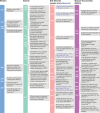

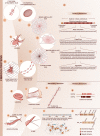
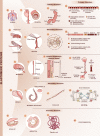


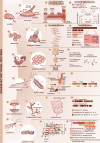


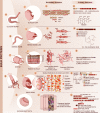



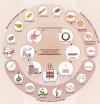
Similar articles
-
The Minderoo-Monaco Commission on Plastics and Human Health.Ann Glob Health. 2023 Mar 21;89(1):23. doi: 10.5334/aogh.4056. eCollection 2023. Ann Glob Health. 2023. PMID: 36969097 Free PMC article. Review.
-
Bridging Nature and Engineering: Protein-Derived Materials for Bio-Inspired Applications.Biomimetics (Basel). 2024 Jun 20;9(6):373. doi: 10.3390/biomimetics9060373. Biomimetics (Basel). 2024. PMID: 38921253 Free PMC article. Review.
-
Mussel Byssus Structure-Function and Fabrication as Inspiration for Biotechnological Production of Advanced Materials.Biotechnol J. 2018 Dec;13(12):e1800133. doi: 10.1002/biot.201800133. Epub 2018 Aug 24. Biotechnol J. 2018. PMID: 30076756 Review.
-
Developing synthetic biology for industrial biotechnology applications.Biochem Soc Trans. 2020 Feb 28;48(1):113-122. doi: 10.1042/BST20190349. Biochem Soc Trans. 2020. PMID: 32077472 Free PMC article. Review.
-
Biotechnology-a sustainable alternative for chemical industry.Biotechnol Adv. 2005 Nov;23(7-8):471-99. doi: 10.1016/j.biotechadv.2005.03.004. Biotechnol Adv. 2005. PMID: 15919172 Review.
Cited by
-
Bio-Informed Porous Mineral-Based Composites.Small. 2025 Feb;21(7):e2401052. doi: 10.1002/smll.202401052. Epub 2024 Sep 2. Small. 2025. PMID: 39221524 Free PMC article. Review.
-
Reversible light-responsive protein hydrogel for on-demand cell encapsulation and release.Acta Biomater. 2025 Jan 24;193:202-214. doi: 10.1016/j.actbio.2025.01.012. Epub 2025 Jan 10. Acta Biomater. 2025. PMID: 39800098
-
Enhancing Silk Fibroin Hydrogel Mechanical Properties through Biomimetic Mineralization by Self-Assembled Catalytic Complexes.ACS Omega. 2025 May 20;10(21):21405-21418. doi: 10.1021/acsomega.5c00058. eCollection 2025 Jun 3. ACS Omega. 2025. PMID: 40491456 Free PMC article.
-
Entropy-driven denaturation enables sustainable protein regeneration through rapid gel-solid transition.Nat Commun. 2025 Jul 26;16(1):6907. doi: 10.1038/s41467-025-61959-9. Nat Commun. 2025. PMID: 40715083 Free PMC article.
-
Quality Evaluation Based Simulation Selection (QEBSS) for analysis of conformational ensembles and dynamics of multidomain proteins.Commun Chem. 2025 Aug 10;8(1):241. doi: 10.1038/s42004-025-01623-x. Commun Chem. 2025. PMID: 40783454 Free PMC article.
References
-
- Eriksen M.; Lebreton L. C. M.; Carson H. S.; Thiel M.; Moore C. J.; Borerro J. C.; Galgani F.; Ryan P. G.; Reisser J. Plastic Pollution in the World’s Oceans: More Than 5 Trillion Plastic Pieces Weighing over 250,000 Tons Afloat at Sea. PLoS One 2014, 9, 111913.10.1371/journal.pone.0111913. - DOI - PMC - PubMed
Publication types
MeSH terms
Substances
LinkOut - more resources
Full Text Sources

